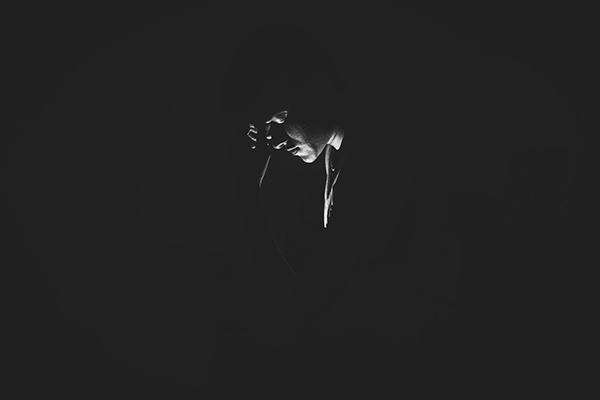SpaceX’s project to bring Internet coverage around the world using satellites could change the image of the night sky. But, Astronomers Rebel Against Elon Musk’s 12,000 New Satellites
The world of astronomy is revolutionized by the plans of the aerospace company SpaceX, founded by the billionaire Elon Musk, to put a constellation of some 12,000 satellites into orbit before the end of the next decade.

The project, called Starlink, will connect to the Internet from virtually anywhere on the planet. But could also irretrievably alter the vision of stars for all humanity.
There are currently some 18,000 objects over 10 centimetres orbiting the Earth. These include some 2,000 operational satellites and the rest is space debris: dead satellites, rocket debris and fragments from collisions and accidents. Of all these objects, only about two hundred can be seen with the naked eye.
Musk’s plans would almost double the number of objects in Earth’s low orbit, home to the International Space Station (ISS) and the Hubble Space Telescope.
Other companies such as Amazon, Telesat and Oneweb have already announced their intention to create similar constellations. Each made up of thousands of satellites. So it is possible that within 10 years we will see more artificial satellites than stars in the night sky.
SpaceX has already taken the first step. On May 23rd, SpaceX launched the first 60 satellites on board its own manufactured Falcon 9 rocket.
500 pounds
Each satellite weighs 500 pounds. Has a solar panel that charges the batteries, but can also reflect sunlight to Earth.
Depending on the angle at which sunlight strikes, the brightness of the satellites could for a few moments exceed that of any other star in the sky.
Although SpaceX’s plans are no secret, soon after the launch the alarm began to spread among astronomy enthusiasts and professional astronomers. They viralized videos of satellites slowly crossing the night sky. At that time, its brightness was similar to that of the polar star.
As indignation spread across social networks, Musk said on Twitter that satellites would only be visible at dawn and dusk. When they would still reflect sunlight because of their altitude, while at night they would be hidden by the Earth’s shadow. However, Musk could be wrong.
“The concern is that at certain times of the year satellites could be seen all night long”. Acording to Patrick Seitzer, a University of Michigan (USA) scientist and one of the leading experts on space debris tracking.
The ISS

According to Seitzer, it could happen that Starlink satellites are sometimes seen throughout the night. Depending on the geometry of their orbit and the position of the Sun vis-à-vis the Earth. “In northern hemisphere, between May and June you can see the ISS pass four or five times every night and not just during twilight.
The ISS is a satellite in one orbit, if there are 10,000 or 15,000 more… you can start to see what we’re worried about.”
Seitzer, who is a member of the American Astronomical Society (AAS), is currently analyzing the situation at SpaceX’s request. “SpaceX approached us [the AAS] after the launch given the sightings of very bright satellites in the sky,” he explains.
He doesn’t want to make an assessment yet because until he completes his analysis it won’t be possible to determine how visible the satellites will be.
So far, they have been losing their brightness as they ascend to their final altitude of 341.8 miles, to the point where they are only seen using binoculars.
Even so, Starlink satellites can hinder astronomy in two ways.
The first one
The first, and most obvious, is to pass in front of the telescopes.
During astronomical observations, long exposure times are often used. This allow the telescopes to pick up light for minutes or even hours. In this way, distant or low-light objects can be seen better.
If a satellite crosses in front at that moment, what appears in the image is a bright line, just as when the headlights of a car appear in a nocturnal photo.
If this happens, the most common thing is that the image becomes unusable for scientific use. So, the observation has to be repeated, something expensive and not always possible.
The telescopes most sensitive to these interference are those that observe large portions of the sky in each image. This telescopes are called wide field.
These are used to monitor many objects at the same time and are useful for searching for exoplanets or detecting near-Earth asteroids, for example.
The world’s largest of its kind is the Large Synoptic Survey Telescope (LSST). It is still under construction in northern Chile, which will be able to photograph the entire sky every few nights.
Those responsible for the LSST have already expressed their concern in a statement. Since they have estimated that practically all the images they take in the first and last hours of the night will contain at least one Starlink satellite.
Fortunately, they have said, they have automatic mechanisms that can discard contaminated pixels without losing the entire image. So they say that for them Starlink will be no more than “a nuisance”. Although they warn that other telescopes will not have the same luck.
The second one

The second type of problem is more difficult to evaluate and control.
It is the electromagnetic pollution that these satellites will produce by emitting radio waves to communicate with each other and send the Internet signal to earth.
These waves could interfere with radio telescopes, large antennas that pick up radio signals from the universe. An example of these devices is the 30-metre Pico Veleta telescope in Sierra Nevada (Granada). A large antenna that formed part of the global network. The 30-metre Pico Veleta telescope obtained the first image of a black hole, published in April 2019.
Since radio telescopes are very sensitive to electromagnetic pollution, we try to build them in isolated regions, far from any human technology. Starlink threatens the existence of these “quiet zones” because the satellites will cover the whole planet.
U.S. National Radio Astronomy Observatory (NRAO) and SpaceX
The U.S. National Radio Astronomy Observatory (NRAO) has announced that it is already collaborating with SpaceX. They will try to mitigate the potential impact on radio astronomy.
Some ideas being considered are the creation of “exclusion zones” in which satellites would stop broadcasting, or avoiding the use of those frequencies most interesting to scientists.
If satellite constellations develop uncontrollably, they could occupy frequencies that are not yet used in research, but could be exploited as new instruments emerge.
“In practice we run the risk that observation windows will be filled by these constellations that will not be exploited in the future.” José Luis Gómez, a researcher at the Instituto de Astrofísica de Andalucía (IAA), explained.
According to Gómez, the situation should be discussed between the interested companies and the International Astronomical Union (IAU), the main association of astronomers worldwide. “I personally thought that this would have been negotiated very well, but it turns out not.
IAU and AAS

For their part, both IAU (International Astronomical Union) and AAS (American Astronomical Society) have offered to collaborate with SpaceX. As other companies in order to find ways to minimize possible impacts.
The IAU has expressed its commitment to the defense of a dark sky and no radio emissions as a resource “essential to allow the advancement of our knowledge of the universe”. But also “for the protection of nocturnal fauna. As it is unknown what new environmental impacts could arise by transforming the appearance of the sky and constellations.
Beyond a compromise to avoid damage to research, there remains the fact that a handful of private companies have the capacity to change at a stroke the appearance of the night sky for all humanity.
For the time being it has been enough for them to obtain permission from a single government. All this without having any kind of public debate on the subject.
According to Musk himself, offering Internet connection to remote areas is “the highest good”.



